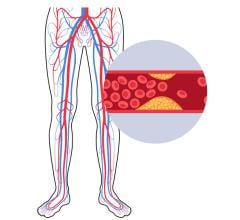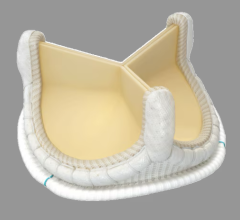November 19, 2007 - Endovascular therapy as opposed to open surgery is a less invasive treatment choice that also appears to improve patient outcome, according to author Mark A. Farber, M.D., associate professor, division of vascular surgery at the University of North Carolina in Chapel Hill.
Eighty-five percent of people who suffer thoracic aortic trauma die at the scene of the injury, while patients who survive and are admitted to a hospital are in danger of significant bleeding from their arterial injury and thus the risk for death, according to a new study published in the November 2007 issue of the Journal of Vascular Surgery.
Between August 1993 and August 2006, a total of 62 patients sustained thoracic aortic injuries to their artery in the region just under the collar bone. Forty-eight of the patients had open surgery; 14 had endovascular repair. Of the patients who received endografts, almost all (13) were not candidates for open surgery. Individual associated traumatic injuries, as well as operative and postoperative outcomes, were compared between open surgical and endovascular groups. Researchers also recorded revised trauma and injury severity scores of the patients to assess the magnitude of their injuries for comparison.
“Patient age, gender, race and mechanism of injury did not differ between open surgical and endovascular groups,” said Dr. Farber. “Additionally, recorded revised trauma and injury severity values were not significantly different implying the groups were similar in presentation. The only exception was sternal and unstable spine fractures, that were more prevalent in the endovascular group.”
In this study, researchers found that using endovascular repair rather than open surgery showed that:
• More renal complications (32 percent vs. 7 percent) and urinary tract infections (35 percent vs. 7 percent) occurred in the open surgery group.
• There were no deaths in the endovascular group as opposed to 23 percent mortality in the open surgery patients.
• Endovascular repair was associated with significant reductions in operative time (118 vs. 209 minutes); estimated blood loss (77 vs. 3180 milliliters); and intraoperative blood transfusions (0.9 vs. 6.1 units).
• No endoleaks were detected during a mean follow-up of 9.4 months in the endovascular group.
• Patients who had endografts had more sternal fractures (14 vs. 0 percent) and unstable spinal fractures (36 vs. 10 percent), than the open surgery group, thus endoscopic repair might be a better, less invasive choice for people with co-morbidities.
Dr. Farber noted that only two patients had to undergo additional endovascular procedures to ensure that the devices were positioned correctly against the wall to prevent limitation of blood flow through the artery, which sometimes can be attributed to the small size of the aorta in some patients. This, he says, speaks to the need for the design of newer, smaller devices for patients who require them.
“Endovascular repair of blunt descending thoracic aortic injuries utilizing thoracic or abdominal endografts is a technically feasible modality that is at least equivalent to open therapy in the short-term, because it is associated with lower intraoperative mortality,” said Dr. Farber. “Our study shows that this method of treatment is a safe, less invasive option for patients with this type of trauma.”
Furthermore, added Dr. Farber, a review of comparative studies to date suggests that endovascular repair may be associated with less hospital mortality and reduced chance of paraplegia or paraparesis. However, he said, additional experience with endovascular repair of blunt thoracic aortic injuries and larger studies may clarify these observations.
Source: The Society for Vascular Surgery
For more information: www.jvascsurg.org


 January 24, 2025
January 24, 2025 









